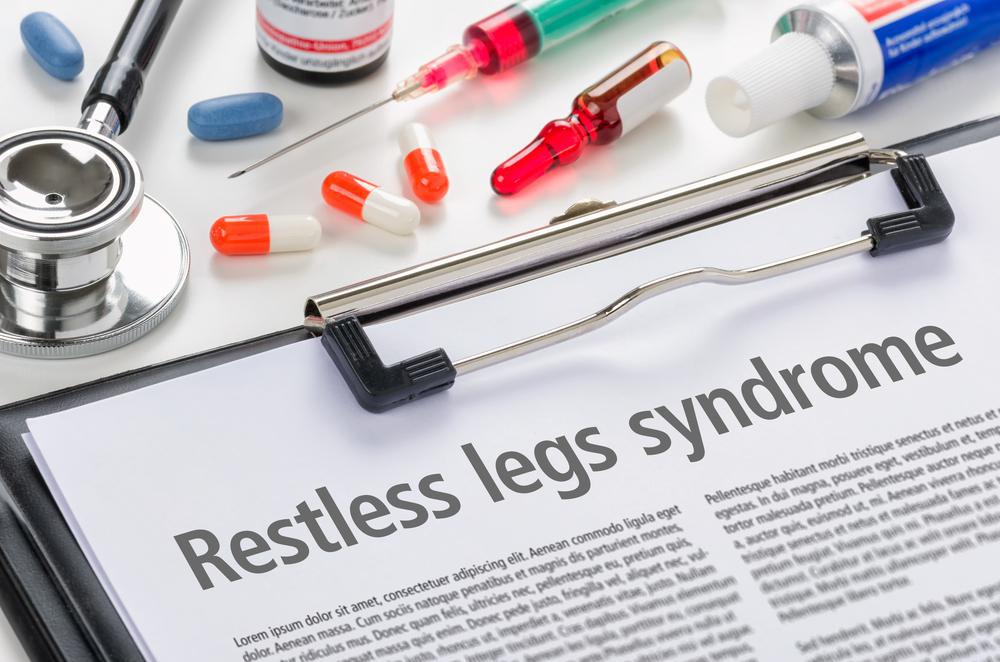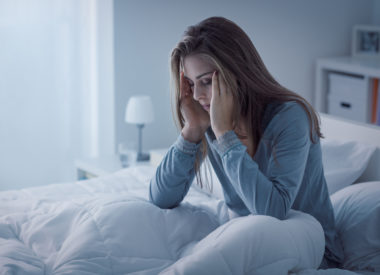Restless Leg Syndrome: Causes and Symptoms
Restless leg syndrome (RLS) affects up to 10 percent of all Americans; according to the National Institutes of Health, as many as five million individuals suffer moderate to severe cases.
Also referred to as restless legs syndrome or Willis-Ekbom Disease, it strikes regardless of gender and can start at any age.
What is Restless Leg Syndrome?
RLS is a condition which can happen at any time of day, yet it is still considered a movement disorder of sleep with a neurological foundation. RLS does not occur during sleep but prior to sleep and can be blamed for delaying sleep onset enough to create conditions for sleep deprivation. It’s characterized by a nearly irresistible urge to move the legs during the evening, especially at bedtime.
Most people experience these sensations while sitting or lying down. The legs may not be the only area of the body involved: arms, neck, trunk, and head can also be targets.
Age tends to worsen the condition, though children can experience severe RLS symptoms as well. Older people tend to have more frequent bouts with RLS, however, with symptoms lasting much longer.
Considered a lifelong condition with no known cause or cure, RLS is a disorder requiring symptom management so sufferers can achieve pain relief and improved sleep quality. People with RLS (or its cousin, PLMS) may thrash around in bed for quite a while before finally falling asleep.
What is PLMS?
PLMS refers to periodic limb movements in sleep.PLMS are similar to the twitching movements that people with RLS suffer, but they only occur after the person has fallen asleep.
More than 80 percent of people who have RLS experience PLMS. These movements are often repetitive, but they don’t have to be unusually intense to significantly disrupt sleep.Someone who has extensive limb movements over the course of the night can develop another condition, PLMD, or Periodic Limb Movement Disorder, which, like RLS, requires a medical diagnosis and treatment.
Symptoms of Restless Leg Syndrome
The following symptoms describe the experience of an RLS sufferer:
-
Abnormal sensations in the legs which may be uncomfortable, irritating, even painful; sensations include cramping, tingling, aching, itching, shaking, burning, “creepy crawlies”
-
The irresistible urge to move in order to find relief from these sensations
-
Difficulty falling asleep because of these sensations; tossing and turning and thrashing
-
Excessive daytime sleepiness that’s not explained by medical problems or poor sleep habits
Causes of Restless Leg Syndrome
It’s unclear what causes RLS, but researchers suspect it might be inherited, and some gene variants has been shown to link to the condition. People with Parkinson’s disease also frequently suffer from RLS.
Inadequate levels of iron in the blood (anemia) may also account for some of the symptoms of RLS. Another substance, dopamine, is being studied; it’s responsible for producing smooth muscle activity.A dysfunction in the brain’s circuitry while processing dopamine may explain the involuntary movements and sensations that are hallmarks of RLS.
Triggers forRLS
-
Periods of inactivity can lead to problems with restless legs, such as long car rides or transcontinental flights, sitting in a movie theater, dealing with a limb in a cast, or working at a desk all day
-
Sleep deprivation may lead to a worsening of RLS symptoms
-
Simply reclining at the end of the day or practicing relaxation exercises can trigger these sensations
Other factors that may explain the presence of RLS
-
Chronic diseases (kidney failure, diabetes, peripheral neuropathy)
-
Medication use (anti-nausea drugs, antipsychotics, antidepressants, sedating antihistamines)
-
Pregnancy (especially the third trimester)
-
Alcohol or caffeine use
Why it matters to diagnose and treat RLS
Many people don’t consider their restless legs a serious problem, so they don’t bring it up when they see their doctor. They may not think they will be taken seriously, or they feel they should just power through the symptoms.
However, like untreated obstructive sleep apnea, untreated RLS can lead to other health problems down the line.
At the very least, untreated RLS will result in worsening symptoms and sleep deprivation. People with RLS complain of problems with relationships, job performance, traveling, high blood pressure, mood swings, even the simplest activities of daily living due to the fatigue caused by sleep deprivation.
Also, if RLS worsens rapidly, it might be an indicator that an associated medical condition has developed or become aggravated. Research suggests that treating other related medical conditions can often provide relief for the symptoms of RLS.
Finding relief from RLS
Taking immediate action to find relief for the sensations of RLS is a common tactic. People will:
-
Pace the floor until the feelings subside
-
Massage the affected areas
-
Take a warm bath or apply warm compresses
-
Use an ice pack
Lifestyle changes can help with long-term management of symptoms:
-
Reduced or discontinued use of alcohol, caffeine or tobacco products
-
Taking mineral supplements (iron, folate, magnesium)
-
Improving sleep hygiene
-
Getting more regular exercise
When it gets bad: What to do about RLS
Seeking medical advice when symptoms become life-changing and severe is recommended. The physicians best equipped to help you include neurologists, sleep physicians, and primary care providers. They can perform laboratory tests to rule out other conditions as well as mineral deficiencies. Their careful review of your history, medications, and current symptoms can ensure a proper diagnosis. Sometimes an overnight sleep test may be warranted if other sleep disorders are suspected.
These doctors can also prescribe medications specifically used to alleviate the symptoms of restless legs; also available by prescription is a new FDA-approved counter stimulation device which can provide relief by way of a vibrating pad.
Ultimately, if you believe you haveRLS and your symptoms are mild, you can expect them to worsen with age, so it’s best to see a doctor to identify and diagnose the problem.



